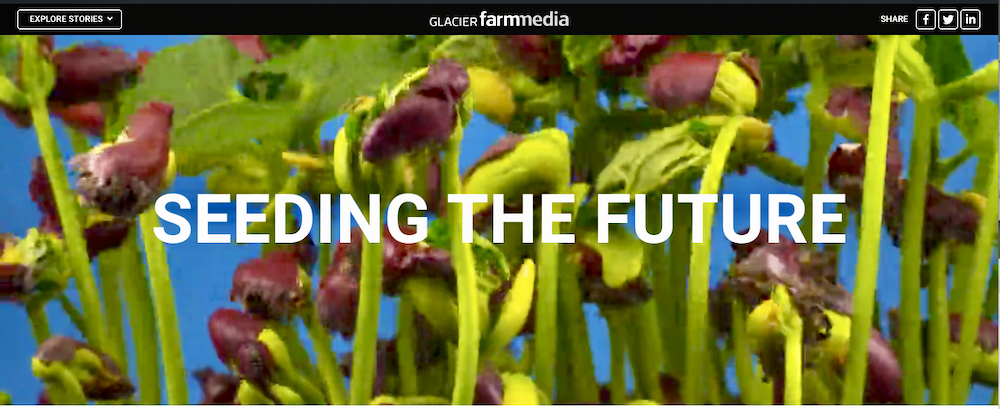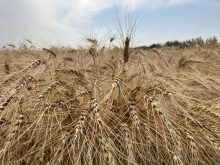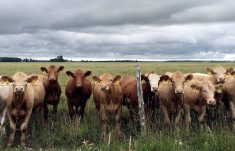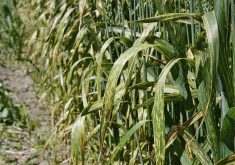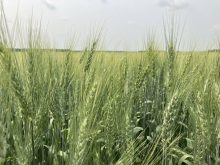It may not have seemed like a big deal when researchers announced they had sequenced the genomes of a bunch of wheat varieties.
But it was big news for wheat midge — as well as other pests and diseases such as stripe rust and fusarium head blight.
That’s because it should greatly speed up the process of bringing varieties with desirable traits (such as pest or disease resistance) to market.
Late last year, scientists involved in a three-year international effort called the 10+ Genome Project said they had sequenced the DNA of 15 wheat varieties, greatly expanding the ‘atlas’ of sequenced wheat genomes (which previously had a lone bread wheat variety called Chinese Spring).
Read Also
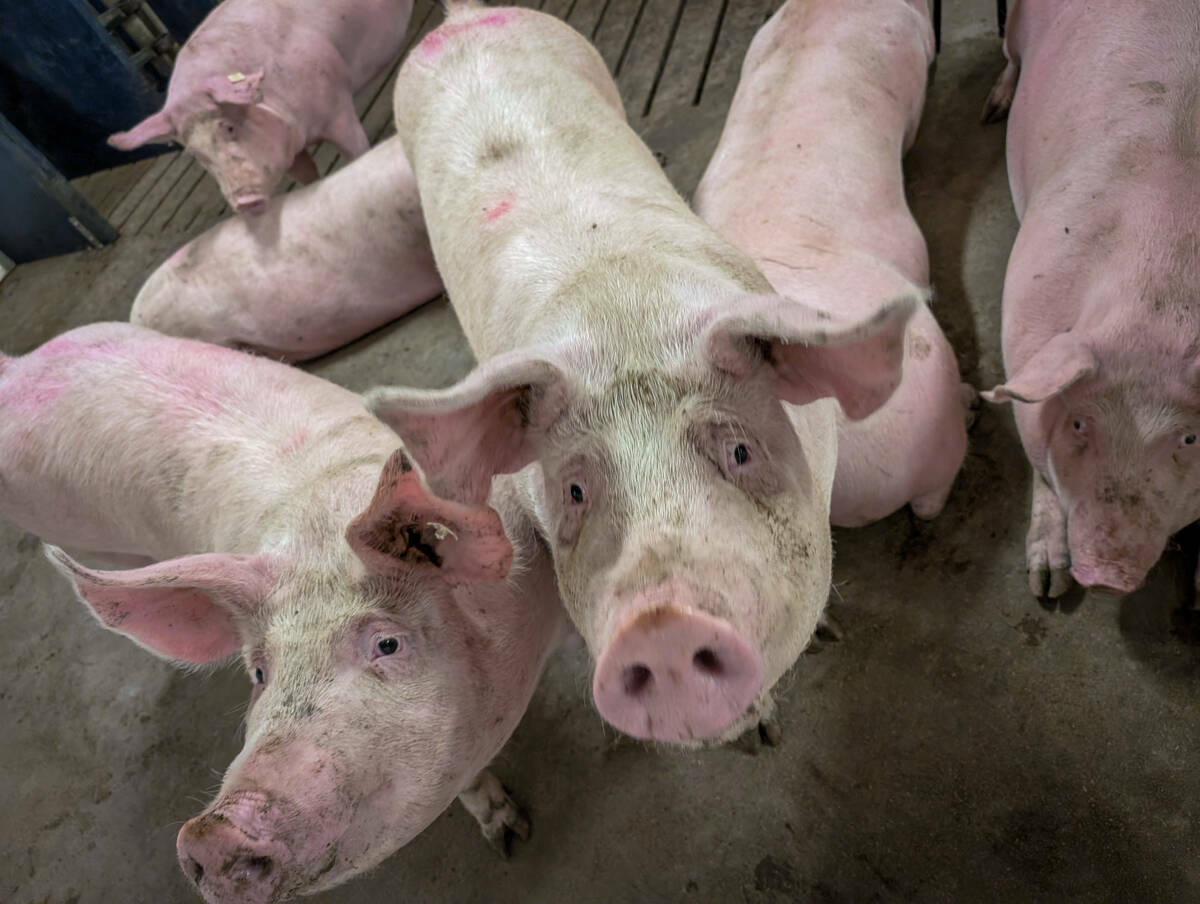
Ottawa pauses update on food from cloned livestock
Health Canada has indefinitely suspended a proposed update to the novel food policy governing foods derived from cloned cattle and swine, as well as their progeny.
For researchers, it’s like suddenly being able to put a complex puzzle together in a day or two compared to weeks or months.
“We know wheat varieties are different,” said Curtis Pozniak, a University of Saskatchewan professor who played a lead role in the project. “They each yield differently to each other depending on the environment. They have different disease resistance packages and different end-use quality profiles.
“The idea is to compare these genomes to one another so we can start paving a way to understand all the genes in wheat and ultimately how they contribute to agronomic performance.”
Take wheat midge, for example.
Or rather the gene that provides some wheat varieties with greatly increased tolerance to the pest. The gene is called Sm1 and is found in several varieties. But the location of that gene was something of a mystery and that was an issue for wheat breeders.
“In the 10+ Genome Project, we sequenced the variety CDC Landmark, which we knew was resistant (to wheat midge) because it carries the tolerant Sm1 gene,” said Pozniak. “We then compared the DNA sequence to several other varieties that were susceptible to wheat midge.
“When we did that comparison we could see very quickly that a certain segment of DNA was different right around where the Sm1 gene should be. That gave us the clue we needed to quickly identify the actual Sm1 gene.”
The ability to identify Sm1 in other wheat varieties is significant, as wheat midge costs Prairie wheat growers, on average, an estimated $60 million plus annually.

A road map for better varieties
The Genome 10+ Project was launched primarily to support the wheat research community, said Pozniak. Wheat is the world’s most widely cultivated cereal (it’s planted on more than 215 million hectares annually) and provides 20 per cent of human caloric intake. However, wheat yields have become stagnant on a global basis, possibly due to the crop’s susceptibility to the effects of climate change.
According to The Wheat Initiative — the organization which spearheaded the 10+ Genome Project — worldwide wheat production will need to increase by 60 per cent by 2050 to meet demand from a rising global population. Geneticists who participated in the project believe gene identification and comparative analysis will play a key role in meeting this lofty goal.
Having only one complete wheat genome to work with wasn’t enough, said Pozniak.
“One genome doesn’t capture the vast genetic differences that we know exist in wheat, so we decided to launch the 10+ Genome Project and sequence additional varieties collected from breeding programs from around the world,” he said.
“We focused specifically on varieties from breeding programs to capture the variation in DNA patterns that are actually used in plant breeding.”
The greatly expanded genome atlas gives scientists an improved ability to isolate the genes with the most important traits (such as disease resistance, end-use quality and yield) and better understand how they function. They can then attempt to locate identical or similar genes in other wheat varieties that could be used in breeding programs.
Although the word ‘speed’ gets thrown around a lot when describing the sequencing/comparative analysis process, Pozniak prefers the word “efficient.” Yes, it’s faster but finding useful genes is now much less labour intensive, he said.
“In the past when we were looking for genes we would have to be very meticulous,” he said.
“Sequencing experiments were very expensive and time consuming; we would search for and identify genes we thought might be useful and then do a series of experiments to validate it.”
But addressing that issue took a lot of effort — scientists in more than 10 countries were involved in completing the work and publishing the comparative analysis of the genomes.
Comparative analysis looks for both similarities and differences between wheat cultivars, said Pozniak. But equally important are those DNA segments that are identical.
“The differences (identified in DNA) might be associated with differences in agronomic performance, disease resistance or soil quality but we can also see where they’re the same,” he said.
Those regions of the genome that are the same could represent a number of common characteristics which define wheat, he said, or they may be areas of the genome breeders have selected to remain the same. On the other hand, they may be targets for increasing diversity in breeding programs and making further genetic gains.
This is not to say that breeders now have a magic bullet that can instantaneously find beneficial and resistant traits in wheat and immediately commercialize them.
A lot more work needs to be done, said Pozniak.
“We need to try to understand these differences we’re seeing,” he said. “Wheat has well over 100,000 genes that we have to compare and figure out what they’re actually doing and how they collectively contribute to agronomic performance in farmers’ fields.”
Battle against resistance ongoing
Pozniak described current disease-resistant packages in modern wheat varieties as “pretty good.”
“I think breeders and pathologists have been doing a fantastic job at improving what we call the five ‘priority one’ diseases in wheat: stem, leaf and stripe rust plus fusarium head blight and common bunt,” he said.
But there’s no room to be complacent given that the enemies of crops are constantly adapting and changing.
“What we have to be mindful (about) pathogens that cause disease, as well as insect pests, is that they too evolve,” said Pozniak.
Being able to more easily identify resistant genes will give breeders a greater ability to ‘stack’ them into wheat varieties (much like herbicides from different groups are stacked to stave off herbicide resistance).
“Using leaf rust as an example, we routinely stack three to five different resistance genes, making it far more difficult for a pathogen to mutate itself to overcome all of those,” he said. “If you only have one resistant gene, the pathogen can mutate and overcome that one resistant gene.
“We always have to keep working to stay ahead of the pathogen.”
The genetic editing of DNA — in which genetic ‘scissors’ are used to remove undesirable traits — has recently become legal for plant breeding in Canada. This process is also a significant addition to researchers’ tool box, but there’s still a lot of work needed before it can be used optimally in breeding, said Pozniak.
“Down the road, gene editing technologies may support this effort, but we first must identify those genes and what changes in the DNA are required to ensure stable resistance. This is why the comparative analysis of multiple wheat genomes to identify useful targets is so important.”
More on cracking the genetic code
Glacier FarmMedia’s new multimedia website has several stories on genetic research and advances, including the effort to sequence more genomes and Curtis Pozniak on fast-track designer genes. To see these and other stories, go to gfmdigital.com or click the ‘Seeding the Future’ image below.



